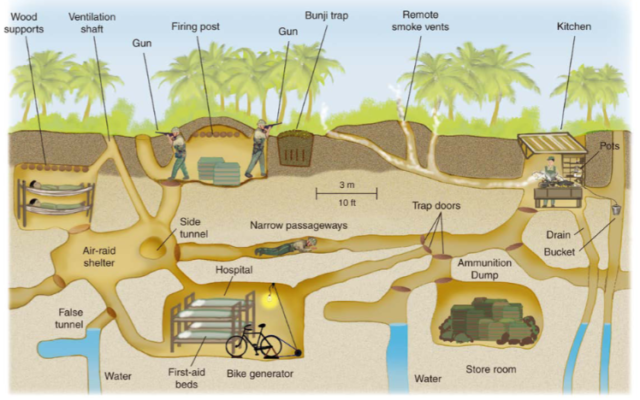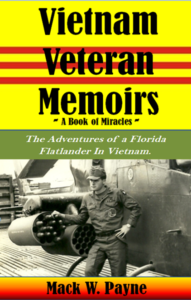Podcast: Play in new window | Download

Viet Cong Tunnel Complex
Episode 2629 of the Vietnam Veteran News Podcast will feature Part 1.5 – Cambodia and Vietnam of an academic paper on the history of tunnel warfare. The featured paper was created by Kenneth R. Olson and David R. Speidel. It is titled: Review and Analysis: Successful Use of Soil Tunnels in Medieval and Modern Warfare and Smuggling.
Professor Olson [krolson@illinois.edu] is associated with the Department of Natural Resources, College of Agricultural, Consumer, and Environmental Sciences, University of Illinois, Urbana, USA. David R. Speidel is associated with the Foreign Agricultural Service, Washington DC, USA.
Tunnels were a significant factor for allied troops in the American Vietnam War. Professor Olson and his Merry Band of Retirees associates have produced another academic paper about tunnels. This paper deals with the historical use of tunnels throughout history.
Previously, Professor Olson produced a paper about the tunnels of the Vietnam War. That paper was so well received; he decided he decided to expand on the subject with this paper which will be featured on this podcast.
According to the abstract of the paper:
For more than 2500 years, soil tunnels have been used in warfare and smuggling. Initially tunnels were utilized to attack fortresses that were underlain by unconsolidated (non-bedrock) soil materials. Later tunnels provided housing and served as smuggling corridors. The medieval warfare undermining technique involved digging soil tunnels with wooden or beam props to hold up the soil ceilings. Then flammable material, such as hay or straw, was put in the tunnel and set on fire. The fire burnt the support beams which collapsed the soil tunnel ceilings and undermined the overlying perimeter wall. Later gunpowder and dynamite replaced fire when attempting to collapse a tunnel, fortress or perimeter defense. Modern warfare soil tunnels were the pathways used to move troops, weapons and supplies to the other side of a border or wall for surprise attacks. Most of the soil tunnels were placed in easy-to-dig unconsolidated soil materials that had a low water table and were not subject to flooding. Eventually, machinery was used to drill through bedrock permitting deeper and longer tunnels for troop movement or smuggling.
Listen to episode 2629 and discover more about the history of tunnel warfare.











